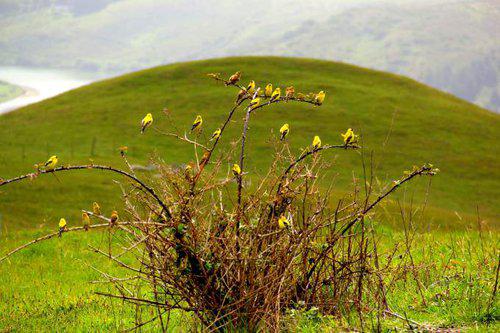
Sounds of Spring
It’s 5:34 a.m., an hour before dawn, and in the Mayacamas mountains above the Valley of the Moon it’s still too dark to see the rocks on the trail. Jacketed against the chill, my three companions are talking quietly as we wait without lights for the sun to rise.
The reason we’re standing in the dark 1,300 feet up in the mountains next to burbling Sonoma Creek is because we’re with Bernie Krause, a globe-trotting Glen Ellen audio specialist who has a passion for capturing the secret sounds of animal life. We’re hoping to hear something special: the dawn chorus, the waking cacophony of wild birds on a spring morning in Sugarloaf State Park after a wet season of much-needed rain.
The reason we’re standing in the dark 1,300 feet up in the mountains next to burbling Sonoma Creek is because we’re with Bernie Krause, a globe-trotting Glen Ellen audio specialist who has a passion for capturing the secret sounds of animal life. We’re hoping to hear something special: the dawn chorus, the waking cacophony of wild birds on a spring morning in Sugarloaf State Park after a wet season of much-needed rain.










